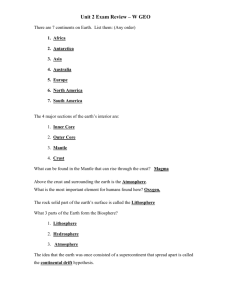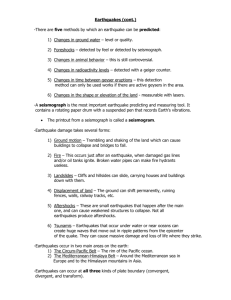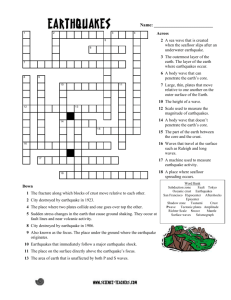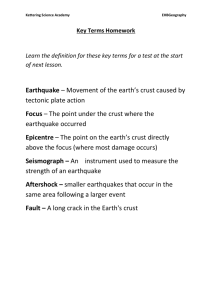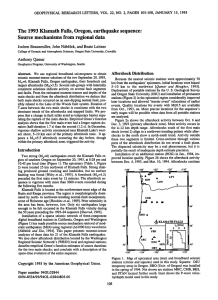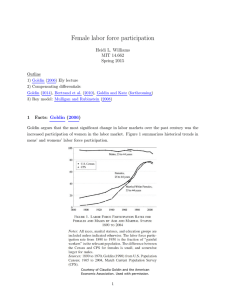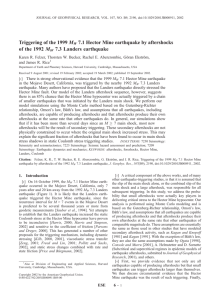GEOMECHANICS OF EARTHQUAKES
advertisement
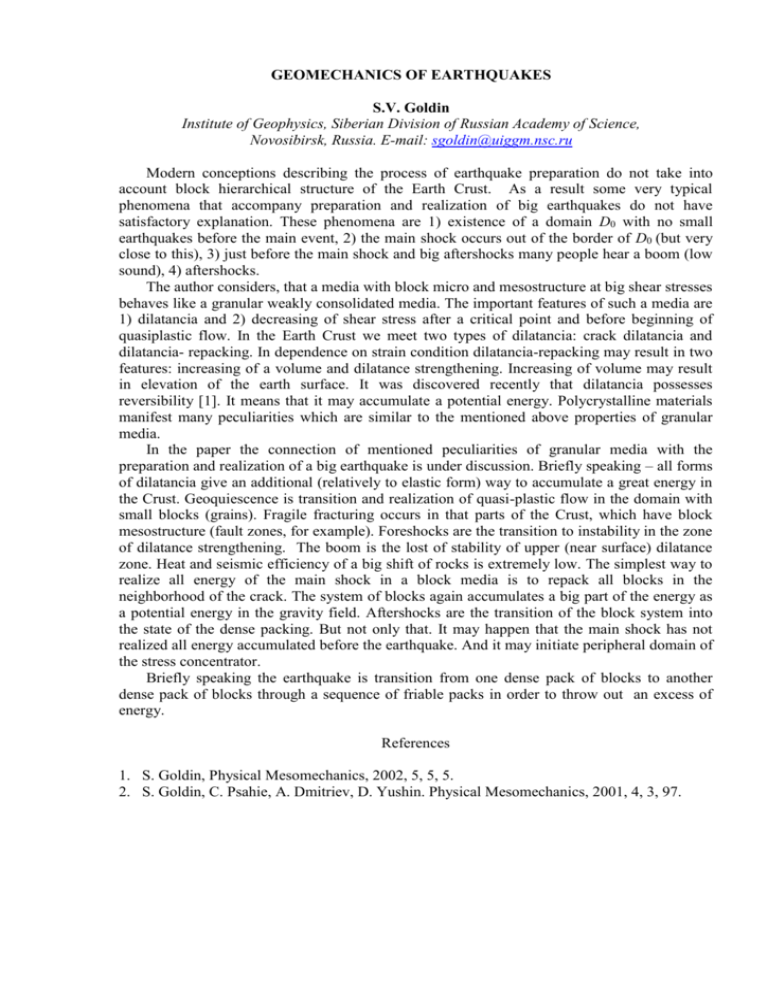
GEOMECHANICS OF EARTHQUAKES S.V. Goldin Institute of Geophysics, Siberian Division of Russian Academy of Science, Novosibirsk, Russia. E-mail: sgoldin@uiggm.nsc.ru Modern conceptions describing the process of earthquake preparation do not take into account block hierarchical structure of the Earth Crust. As a result some very typical phenomena that accompany preparation and realization of big earthquakes do not have satisfactory explanation. These phenomena are 1) existence of a domain D0 with no small earthquakes before the main event, 2) the main shock occurs out of the border of D0 (but very close to this), 3) just before the main shock and big aftershocks many people hear a boom (low sound), 4) aftershocks. The author considers, that a media with block micro and mesostructure at big shear stresses behaves like a granular weakly consolidated media. The important features of such a media are 1) dilatancia and 2) decreasing of shear stress after a critical point and before beginning of quasiplastic flow. In the Earth Crust we meet two types of dilatancia: crack dilatancia and dilatancia- repacking. In dependence on strain condition dilatancia-repacking may result in two features: increasing of a volume and dilatance strengthening. Increasing of volume may result in elevation of the earth surface. It was discovered recently that dilatancia possesses reversibility [1]. It means that it may accumulate a potential energy. Polycrystalline materials manifest many peculiarities which are similar to the mentioned above properties of granular media. In the paper the connection of mentioned peculiarities of granular media with the preparation and realization of a big earthquake is under discussion. Briefly speaking – all forms of dilatancia give an additional (relatively to elastic form) way to accumulate a great energy in the Crust. Geoquiescence is transition and realization of quasi-plastic flow in the domain with small blocks (grains). Fragile fracturing occurs in that parts of the Crust, which have block mesostructure (fault zones, for example). Foreshocks are the transition to instability in the zone of dilatance strengthening. The boom is the lost of stability of upper (near surface) dilatance zone. Heat and seismic efficiency of a big shift of rocks is extremely low. The simplest way to realize all energy of the main shock in a block media is to repack all blocks in the neighborhood of the crack. The system of blocks again accumulates a big part of the energy as a potential energy in the gravity field. Aftershocks are the transition of the block system into the state of the dense packing. But not only that. It may happen that the main shock has not realized all energy accumulated before the earthquake. And it may initiate peripheral domain of the stress concentrator. Briefly speaking the earthquake is transition from one dense pack of blocks to another dense pack of blocks through a sequence of friable packs in order to throw out an excess of energy. References 1. S. Goldin, Physical Mesomechanics, 2002, 5, 5, 5. 2. S. Goldin, C. Psahie, A. Dmitriev, D. Yushin. Physical Mesomechanics, 2001, 4, 3, 97.


